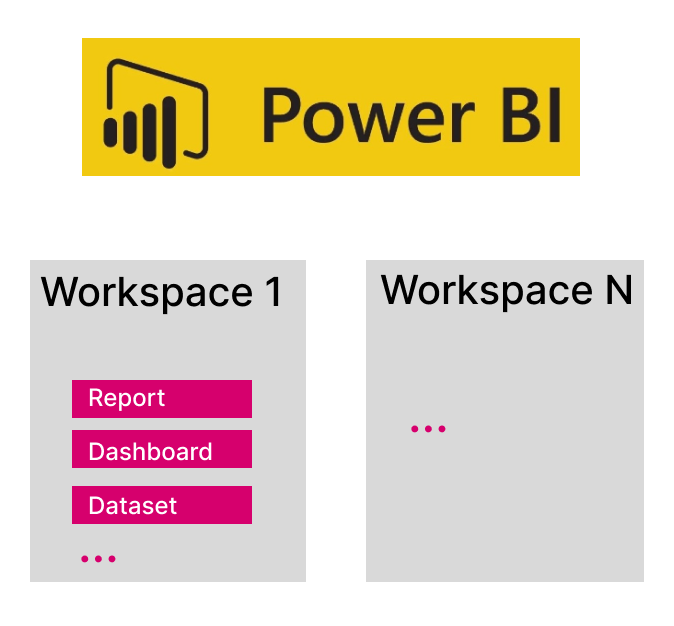Reports from Power BI
Connect to the Power BI business intelligence tool to keep all your assets in one place, on the Reports tab in ONE. This article explains how to work with Power BI reports in ONE.
Limitations
-
The connection is unidirectional, which means you cannot build your reports in Power BI based on the catalog items from ONE, only store the preview of the reports created in Power BI.
-
We don’t recommend renaming your workspaces or projects in Power BI after the import.
Once a workspace or project is renamed, duplicates of all associated catalog items are created in ONE and the original catalog items stop receiving updates. Additionally, any custom information (such as terms, stewardship, and relationships) is not transferred to the duplicates.
However, if renaming a workspace or project cannot be avoided, you should:
-
Manually add any custom information from the original catalog items to the new duplicates.
-
Delete the original catalog items. This can be done by deleting the old location associated with the workspace in ONE.
-
-
If you are using the incognito mode in your browser, you cannot see previews of your reports.
Prerequisites
To work with reports from Power BI, you need to set up a connection between the tool and ONE.
To do this, follow the corresponding instructions depending on where your Power BI solution is deployed:
-
Power BI Connection - For cloud deployments.
-
Power BI Report Server Connection - For on-premise deployments.
Update reports
After the connection to Power BI is set up, you can also manually import reports from your BI tool instead of waiting for the scheduled update.
-
Go to Data Catalog > Catalog Items > Reports.
-
Select Add reports.
-
Select the Power BI connection from the list.

-
Select Continue and choose one or several reports to import to ONE.
The available reports depend on the structure of Power BI. This means you can import reports on several levels: the whole Workspace, a particular Dataset, a Dashboard, or a Report.
You can either select the whole workspace and proceed to step 5 or expand the list to select specific items. When you import a workspace, dataset, or dashboard, all the lower-layer items are imported as well.

-
Select Add reports. The reports are now available on the Reports tab.
-
Optionally, you can now proceed with exploring the report or editing the report metadata. For more details, see Reports.
|
Alternatively, select the import icon next to the report to import its metadata or the eye icon to preview its content. 
|
Was this page useful?
